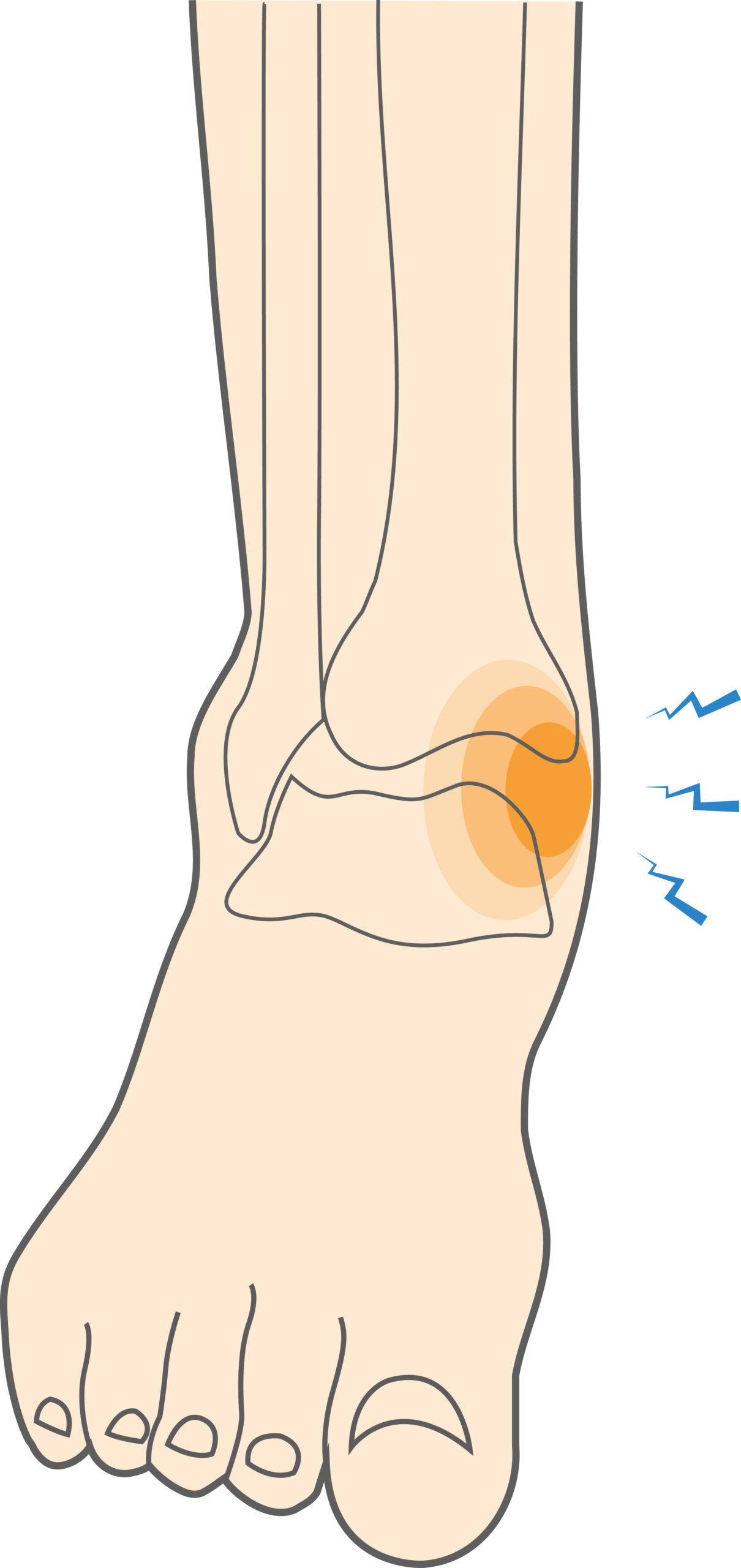Ligaments are strong bands of fibrous tissue that connect bone to bone and often serve to stabilize joints. A medial ankle sprain occurs when the deltoid ligament on the inside (medial side) of the ankle joint is stretched too far. Sprains are graded based on their severity, ranging from a strain (mild) to a partial tear (moderate) to a complete tear (severe). Because the deltoid ligament is so strong, medial ankle sprains occur less often than other types of strains; however, they can take longer to heal.
Ankle Sprain (Medial) Causes, Symptoms & Treatment Options
Ligaments are strong bands of fibrous tissue that connect bone to bone and often serve to stabilize joints. A medial ankle sprain occurs when the deltoid ligament on the inside (medial side) of the ankle joint is stretched too far. Sprains are graded based on their severity, ranging from a strain (mild) to a partial tear (moderate) to a complete tear (severe). Because the deltoid ligament is so strong, medial ankle sprains occur less often than other types of strains; however, they can take longer to heal.
Overview
Overview

What causes Ankle Sprain (Medial)?
Medial ankle sprains are usually caused by a sudden twisting, turning, or rolling inwards of the ankle, also known as an inversion injury. A medial ankle sprain can occur due to a fall or stepping awkwardly onto an uneven surface. It can also happen due to wear and tear of the deltoid ligament. A strong blow to the ankle during athletic competition can also cause this condition, resulting in an injury to the inner ankle ligament.
Medial ankle sprains are most common in these sports:
- Soccer
- Tennis
- Football
- Trail running
- Basketball
Symptoms
Symptoms associated with medial ankle sprains will depend on the degree of damage to the ligaments in your ankle.
Common symptoms include:
- Pain on the inside of the ankle with movement
- Pain on the inside of the ankle joint when placing weight on the ankle
- Ankle swelling, bruising, and tenderness to the touch on the inside of the ankle
When to see a doctor
If your ankle becomes swollen and painful to walk on, you should consult with your doctor. During your visit, your doctor will ask questions about your injury, its symptoms, and the sports you play. During the physical examination, your doctor will press on your ankle to see if the deltoid ligament has been damaged. An X-ray may be ordered to check for broken bones and to determine if the deltoid ligament has detached from the ankle bones (called an avulsion fracture). In some cases, a magnetic resonance imaging (MRI) test may be ordered to provide a more detailed image of the deltoid ligament, especially if the diagnosis is unclear or soft tissue damage is suspected.
Non-operative treatment
The majority of medial ankle sprains, even severe ones, are treated without surgery. Treatment usually involves resting and keeping weight off your ankle. Other conservative treatments include:
- Ice
- Elevation
- Compression with an Ace bandage for swelling
- Nonsteroidal anti-inflammatory drugs (NSAIDs), such as ibuprofen and naproxen, to relieve pain
- Physical therapy exercises to strengthen the ligaments and muscles around the ankle joint
- Wearing a special ankle brace or cast to support your ankle and protect it from re-injury
Try these exercises to help address your condition:
Below is a PDF of the Exercise Program
Surgical Treatment
Surgery is not common for treating medial ankle strains, but it may be recommended for severe cases that result in instability of the ankle or cases that do not improve with conservative treatment. Your doctor may recommend surgery, especially if there are other related issues, such as a fracture, affecting your ankle. Surgical repair may be needed in cases when the inner ankle ligament and other ligaments or bones are damaged.
Recovery
Recovery time for a medial ankle sprain generally takes longer than other types of ankle sprains. Often, it takes three weeks to three months to recover from a medial ankle sprain. Athletes should work with their doctor and physical therapist on a rehabilitation program to facilitate their return to play.
GET BACK TO WHAT YOU LOVE. FASTER
Sources
https://orthoinfo.aaos.org/en/diseases–conditions/sprained-ankle/
https://www.healthline.com/health/ankle-sprain
https://physioworks.com.au/injuries-conditions-1/sprained-ankle
https://www.abmp.com/textonlymags/article.php?article=508
https://sportmedbc.com/article/ankle-sprains
https://www.verywellhealth.com/avulsion-fracture-2549280
https://www.abmp.com/textonlymags/article.php?article=508
Frequently Asked Questions
How long does it usually take to recover from a deltoid ligament sprain?
Recovery from a medial ankle sprain involving the deltoid ligament typically takes 3 weeks to 3 months, depending on severity and treatment consistency.
What are the risks of delaying treatment for an inner ankle ligament injury?
Delaying care for an inner ankle ligament injury may lead to chronic instability, poor healing, and a longer rehabilitation timeline, especially if the injury worsens due to continued activity.
Is surgery required for a severe medial ankle sprain?
Occasionally. Most severe cases of medial ankle sprains can be treated non-operatively unless there are complications like fractures or complete ligament detachment.
What are the symptoms of a deltoid ligament sprain?
Symptoms often include pain on the inner side of the ankle, swelling, bruising, and difficulty bearing weight. Some people also report a feeling of instability or a “giving way” sensation when walking. In more severe sprains, the pain may radiate up the leg or persist even while at rest.

